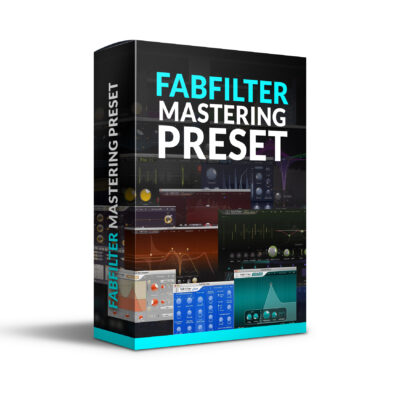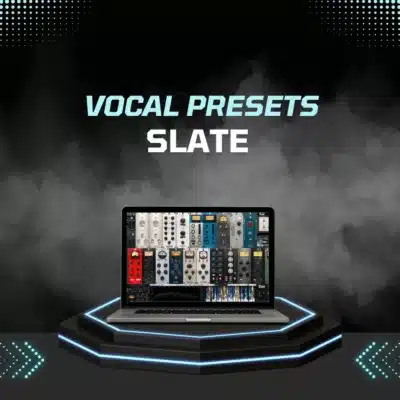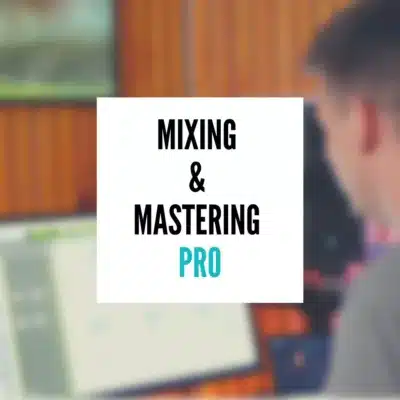Start with the Room, Not the Mic
If there’s one thing I’ve learned after mixing thousands of vocals—many of them recorded at home—it’s that the room will make or break your vocal sound. And unfortunately, this is also the part most people ignore. We all love gear, right? The new mic. The shiny interface. The plugin that promises “analogue warmth.” But if your room is working against you, none of that matters.
You don’t need a full-on vocal booth to get great results. But you do need to understand what your room is doing to the sound before it ever hits your mic capsule.
Let me explain.
Most home studios are in bedrooms or spare rooms—spaces with hard surfaces, untreated walls, and low ceilings. That’s a recipe for reflections, which bounce off walls and blend with your dry vocal, creating a boxy or roomy tone. It might sound fine while you’re tracking, but once you go to mix, suddenly that vocal sounds like it was recorded in a tiled bathroom. Not ideal.
So what do you do?
Start by addressing first reflections—the areas behind and beside your mic. If you can afford acoustic panels, great. If not, thick blankets or even a mattress leaned against the wall behind the mic can make a big difference. You can also grab a reflection filter (like the sE Reflexion Filter) to control some of that spill.
The key thing is mic placement. Don’t record in the middle of the room. And definitely not in a corner. Try setting up so the mic faces into a treated wall or soft surface, with space behind you. That way, reflections are absorbed before they reach the mic.
Another overlooked point: background noise. HVAC hum, street noise, a buzzing fridge in the next room—they all get picked up. Use closed-back headphones, turn off anything unnecessary, and record when your space is quietest. Night owl hours? Early morning? Pick what works.
I’ll say this again because it’s that important: the best mic in a bad room will still sound bad. But a decent mic in a well-prepped room? That can sound amazing.
Use the Right Mic and Gear (But Don’t Go Broke)
One of the most common questions I get is: “What mic should I buy to get a professional vocal sound at home?” And while I get the obsession—we’ve all been down that gear rabbit hole—the truth is a $2,000 mic in a bad setup won’t save your vocal. That said, the right mic and clean signal chain can absolutely level you up, even if you’re working in a bedroom.
Let’s start with the mic.
For most home studios, a large-diaphragm condenser is the go-to. They’re sensitive, detailed, and flattering on most voices. You don’t need a Telefunken. Something like the Warm Audio WA-47jr, Rode NT1, or even the Audio-Technica AT2020 will give you clean, clear results that sit well in a mix.
If you’re just starting out and don’t have an interface yet, a USB mic like the Shure MV7 can be a solid all-in-one option. It won’t give you the flexibility or quality of a full XLR setup, but it’s miles better than using your laptop mic or a podcast headset.
Now let’s talk about the rest of the chain.
You’ll need an audio interface—and yes, a Focusrite Scarlett or UA Volt is perfectly fine. These entry-level interfaces are clean, quiet, and easy to use. Don’t let someone on a forum convince you that you need a Neve preamp and an Apollo just to record at home. Would it be nice? Sure. But it’s not the difference between amateur and pro sound.
What is? Using a pop filter, mounting your mic properly, and making sure your gain staging is on point (we’ll get to that next).
One last thing—cables and power. Use balanced XLR cables (not those $9.99 Amazon specials), and make sure your interface is supplying phantom power (+48V) if your mic needs it. It sounds simple, but I’ve had people send me tracks with no signal, only to find they never turned phantom on.
At the end of the day, don’t let gear become the excuse. I’ve mixed vocals recorded on a $200 setup that sounded better than tracks recorded on $2,000 worth of gear—because the artist understood how to use it.
Get Your Mic Technique and Levels Right
So you’ve got your room dialed in and your gear set up—now what? This is where mic technique and gain stagingcome into play, and honestly, this is where a lot of home recordings fall apart.
The goal when recording vocals is to capture a clean, consistent signal with as much usable detail as possible—not to make it loud, not to drench it in effects, and definitely not to fix it in the mix later.
Let’s start with positioning.
You want to be about 4 to 6 inches away from the mic, with a pop filter between you and the capsule. That filter isn’t just to make your setup look legit—it’s there to stop harsh plosives (those big blasts of air on P’s and B’s) from overloading the mic. And here’s a trick I’ve used with countless vocalists: angle the mic slightly off-axis—just a few degrees. It helps reduce sibilance and makes the vocal a little smoother, especially with brighter mics.
Posture matters, too. Stand up when you can, open your diaphragm, and don’t sing down into your shoes. I can hear the difference between a take recorded sitting on a couch and one where the artist is fully engaged with their performance.
Now, let’s talk levels.
This is where a lot of beginners get tripped up. They think, “I need the loudest signal possible,” so they crank the gain until their waveforms are slamming against the top of the DAW. Don’t do that. Digital clipping sounds terrible—and it can’t be fixed.
What you want is your loudest moments peaking around -12 dBFS, maybe even a bit lower. That gives you plenty of headroom to work with later. It also keeps your interface and preamp from adding any unwanted distortion. If your vocal looks like a solid block in the timeline, it’s too loud.
On the flip side, if your waveform looks like a faint whisper, you’re probably too quiet. Bring up the gain just enough so you’re sitting comfortably between -18 and -12 dBFS, and then stop touching it. Don’t ride the gain mid-performance. That’s what compression is for later.
Oh, and while we’re here—monitoring matters. Use closed-back headphones so your backing track doesn’t bleed into the mic, and give yourself just enough volume to hear the beat without overpowering your own voice. I see a lot of people crank the track, then yell to hear themselves. That leads to a strained take every time.
Bottom line? Good mic technique and proper gain staging are like the unsung heroes of a great vocal. You won’t see them on a gear list—but you’ll definitely hear them in the final product.
Capture Emotion, Not Just Pitch
Let me be real with you—no one cares if your vocal is perfectly in tune if it sounds lifeless.
I’ve mixed tracks where the pitch was a little off, the timing wasn’t perfect, and the room had a little bleed—but the emotion was so raw, so honest, that it gave me chills. And I’ve also mixed vocals that were perfectly edited but completely forgettable. So before you get caught up in sounding “perfect,” focus on delivering something people feel.
It starts before you even hit record. Warm up. Just like athletes stretch before a game, your voice needs time to get ready. I’m not saying you have to do operatic scales for 30 minutes (unless you want to), but humming, lip trills, or even singing along to a reference track can get your voice where it needs to be.
Once you’re warmed up, think about the song. What’s the story? What’s the emotion? Are you angry? Heartbroken? Confident? Lean into that when you sing. Because the mic picks up more than just your words—it picks up your energy, your tension, your hesitation. The best vocalists aren’t always the best singers. They’re the best storytellers.
Now here’s a technique every pro uses: record multiple takes and comp them.
Don’t just hit record once, cross your fingers, and hope it was good enough. Record a few full takes—one with full emotion, one more relaxed, maybe one with subtle phrasing changes. Then go back and build the perfect performance by stitching together the best lines or phrases from each. That’s called comping, and I’ve never done a serious vocal session without it.
Also, try recording a “safety take” after you think you’ve nailed it. Sometimes the pressure’s off and you loosen up—and that becomes the take. Happens all the time.
One more thing—record with a little vibe, but track dry. It’s totally fine to put a little reverb or delay in your headphones while tracking to help you feel inspired. Just make sure you’re not printing those effects into the vocal. You want your raw vocal to be clean, because you’ll add all the sauce in the mix where you can actually control it.
At the end of the day, it’s the emotion that sticks with people—not the plugins you used.
Keep It Clean (And Save the Sauce for Later)
Once you’ve captured a solid vocal performance, the best thing you can do is… leave it alone.
Seriously. Don’t start EQ’ing, compressing, de-essing, and drenching it in reverb right after tracking. Your job at this stage is to capture the cleanest, most usable raw vocal you can—so you have flexibility later when you go to mix. If you mess it up during recording, there’s only so much you can fix with plugins.
First rule? Record dry. No EQ, no compression, no autotune printed in. Yes, it might sound a little flat or unexciting in solo—but that’s the point. You’re laying down the cleanest version of the vocal so you can shape it later in context with the track.
Next: watch for background noise. I’ve had people send me vocals that sounded great—until the chorus came in and I heard a neighbor’s lawn mower, a dog barking, or worse, their TV in the background. Use closed-back headphones so your mic doesn’t pick up the track. And record in the quietest room you can find. Can’t control the noise? Tools like iZotope RX Voice De-noise or Clarity Vx can help, but they’re not magic. Garbage in, garbage out.
Here’s another easy mistake to avoid: breath and mouth noise. Some breaths are musical and belong in the take. Others just distract. Keep a little distance from the mic, stay hydrated, and angle the mic slightly off to reduce those lip smacks and throat clicks.
And finally—don’t process while tracking just to impress yourself. I know how tempting it is to load up your favorite vocal chain so you “sound like the record.” But printing that EQ or compression while recording leaves you stuck. If you want a bit of vibe while tracking, use monitoring-only effects in your DAW—just make sure they’re not being recorded.
Think of it this way: mixing is where you paint the picture. Tracking is where you get a clean canvas. Don’t smear the paint before you even start.
Final Thoughts
Recording vocals at home doesn’t have to mean sacrificing quality. With a little intention—treating your space, choosing the right gear, dialing in your mic technique, and focusing on performance—you can get vocal tracks that sound like they were done in a commercial studio. The truth is, most of the magic happens before the mix. So take your time, get it right at the source, and your future self (or your mixing engineer) will thank you. Whether you’re a singer-songwriter, rapper, or bedroom pop producer, these steps will help you record vocals that sound like a record—not a rough draft.








I used to do this all the time. Turning the gain up too high because the vocals didn’t feel powerful enough and I had trouble hearing myself. One thing I found helpful was turning the music down and the vocals felt a little more dominant without heating up the recording. Also, keeping some space between you and the mic, set the pop filter so it is a good 10 inches away from the mic. With a good mic it will still pick up well. Now when you record all your vocals and mix it all the levels can be brought to the right volumes and sound great. The obstacle I’m trying to tackle right now is my vocal playback in the headphones. I am experiencing a delay and it is too distracting so I’ve turned it off. I can manage without but would be nice to find out how to fix this… This is more a tech problem with my PC I think…